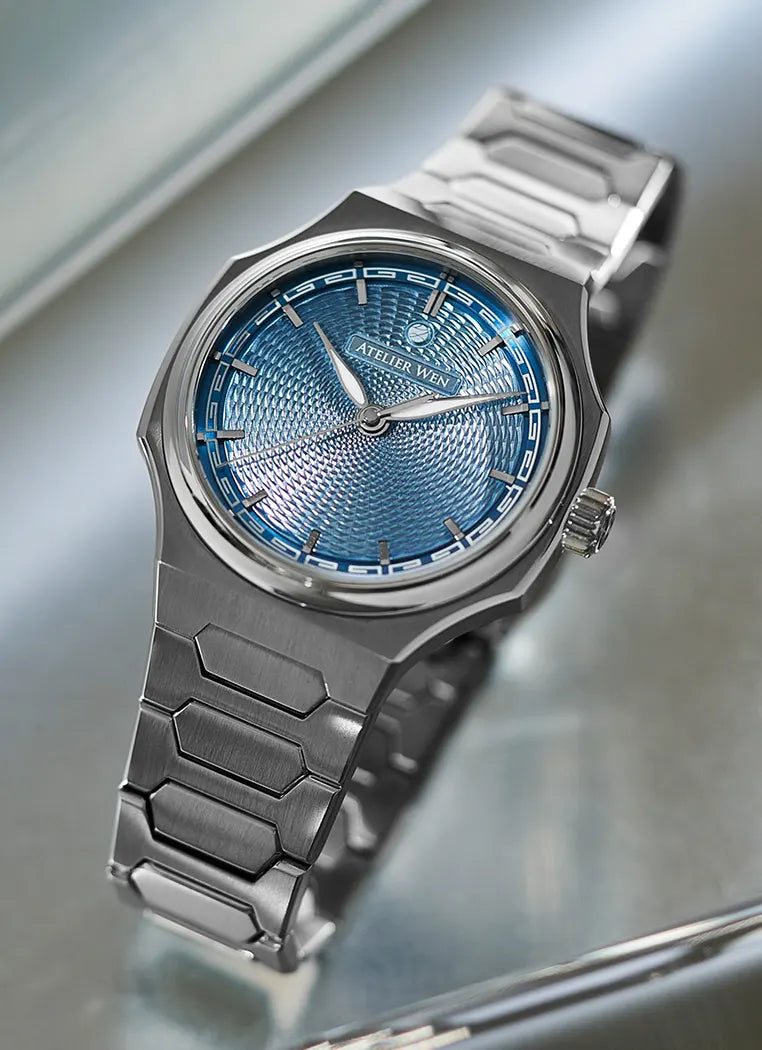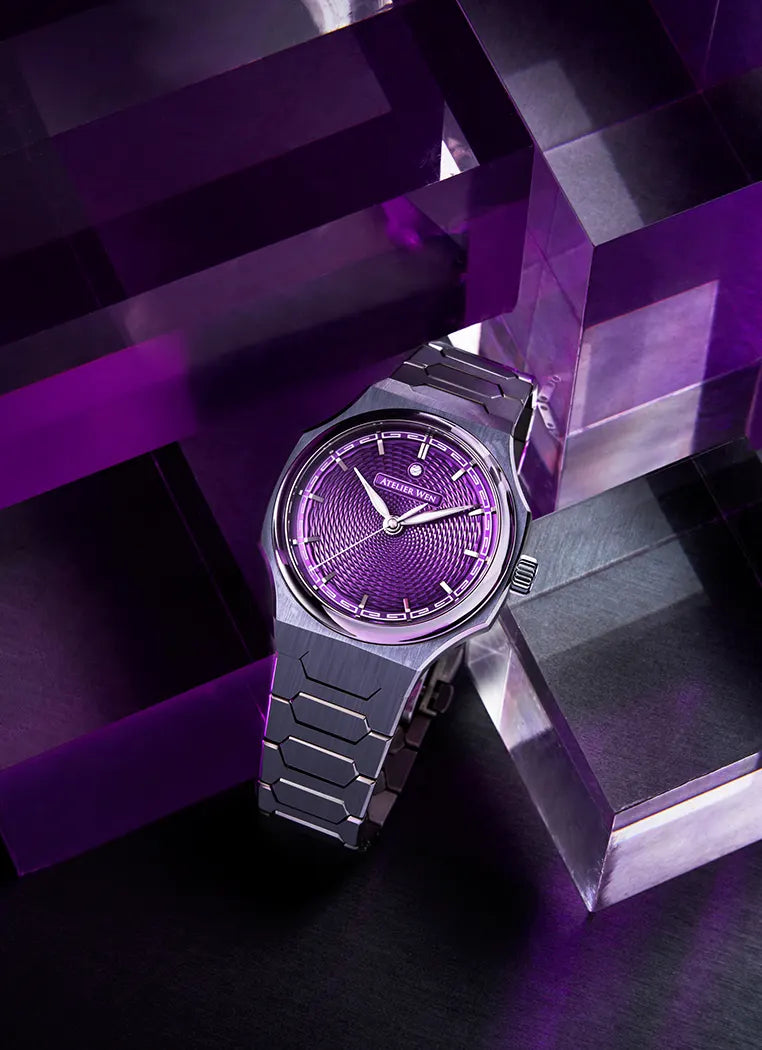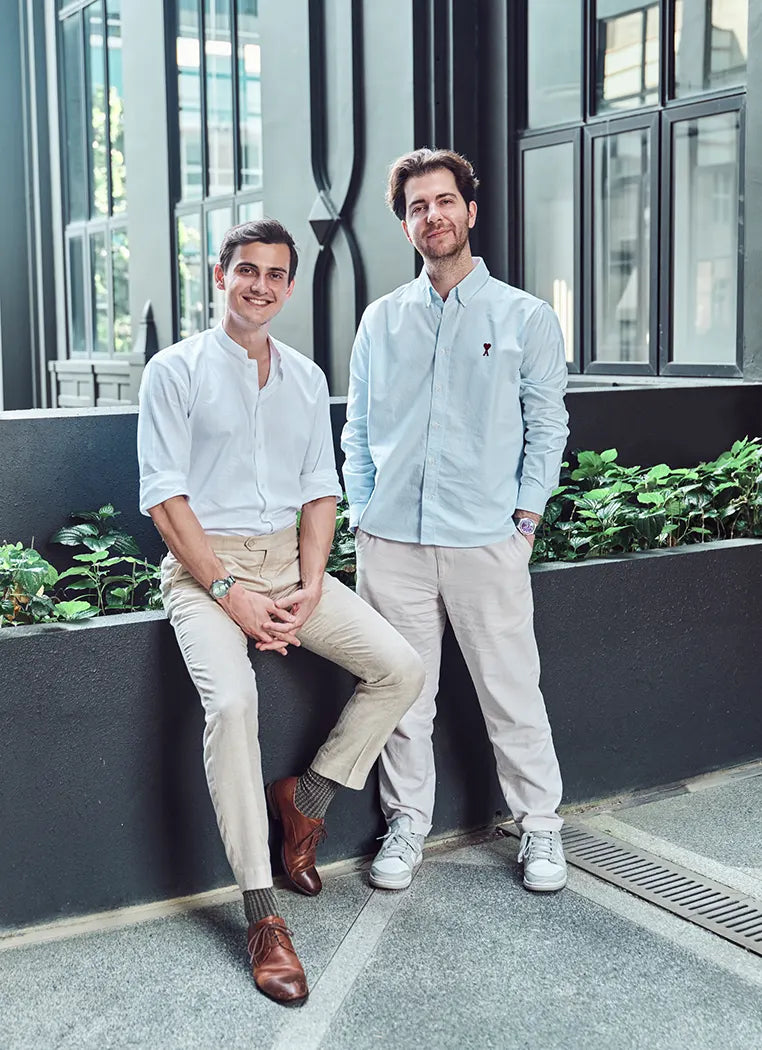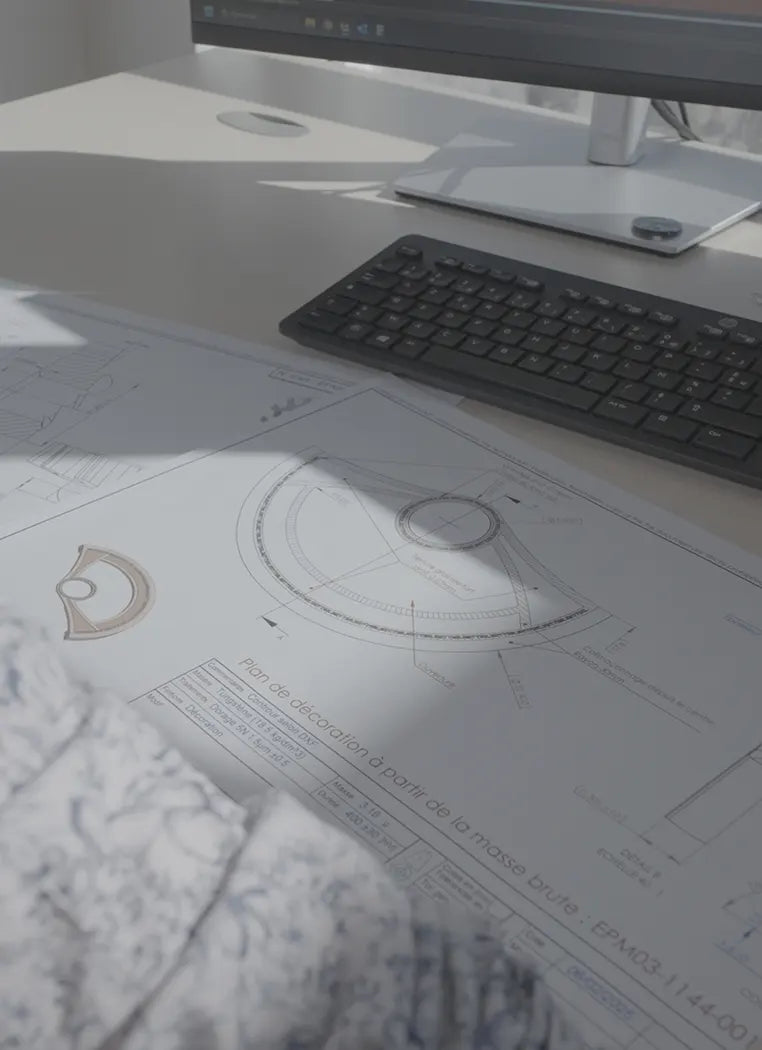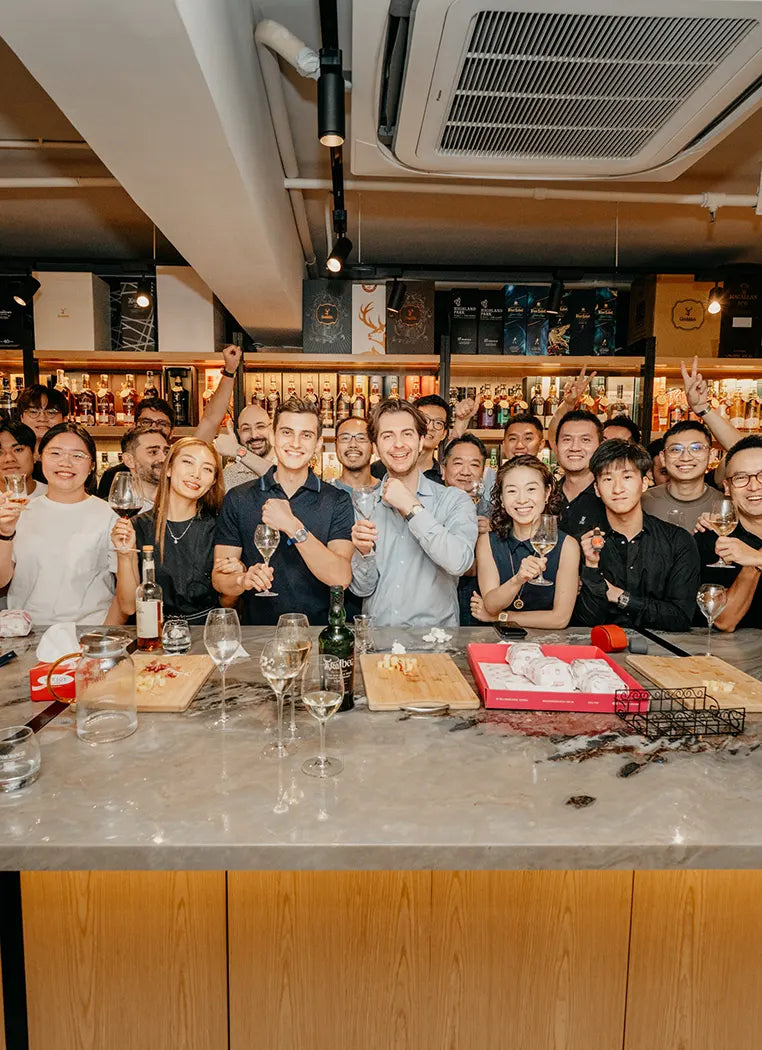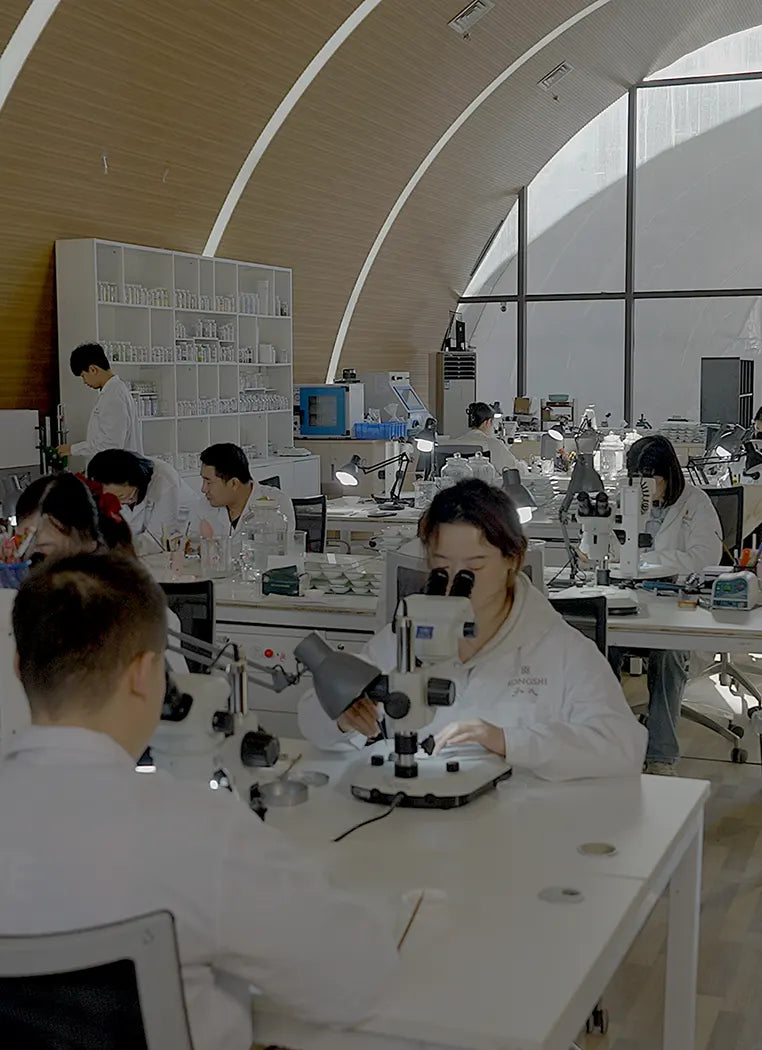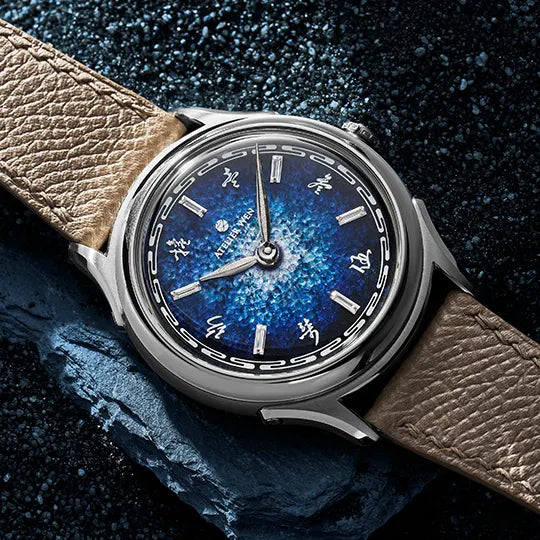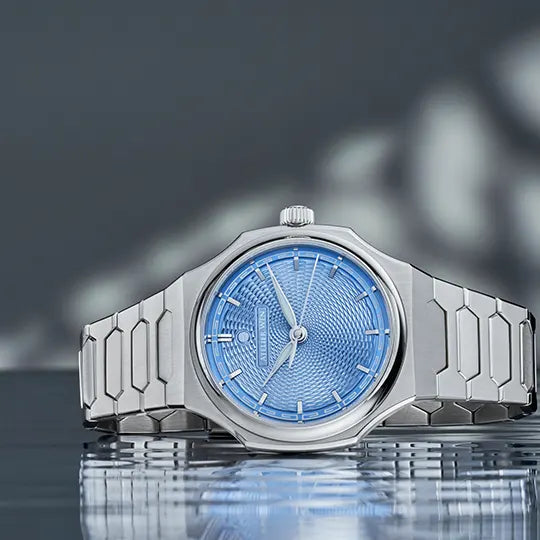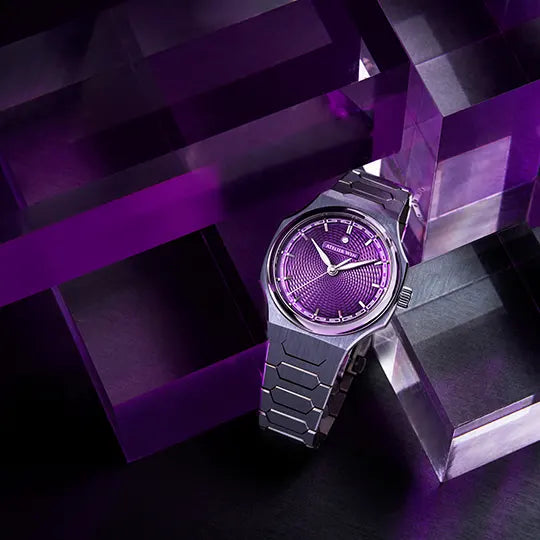This one is a little different.
In what is the first of the two reveals that we briefly teased in our last journal entry, we are ecstatic to be able to announce the launch of our latest and most experimental collaboration yet!

A three-way effort between ourselves, Wristcheck and seconde/seconde/, 锔瓷 (jū cí) pays homage to the indomitable spirit of Master Cheng — from his humble beginnings as a school dropout and a worker of odd-jobs, to his years of failure as he attempted to re-invent the rose engine — and now, to his eventual success as the Asian continent's first and only guilloché master craftsman.
This arc of transcendence and redemption is mirrored in the storytelling behind 锔瓷's dial. Initially rejected by Robin, the dials were destroyed by Cheng himself using a pair of metal shears. Yet, they would go on to find new purpose and undergo a metamorphosis at the insistence of Austen Chu and Romaric André, thus fulfilling the promise of the inscription that decorates its caseback:
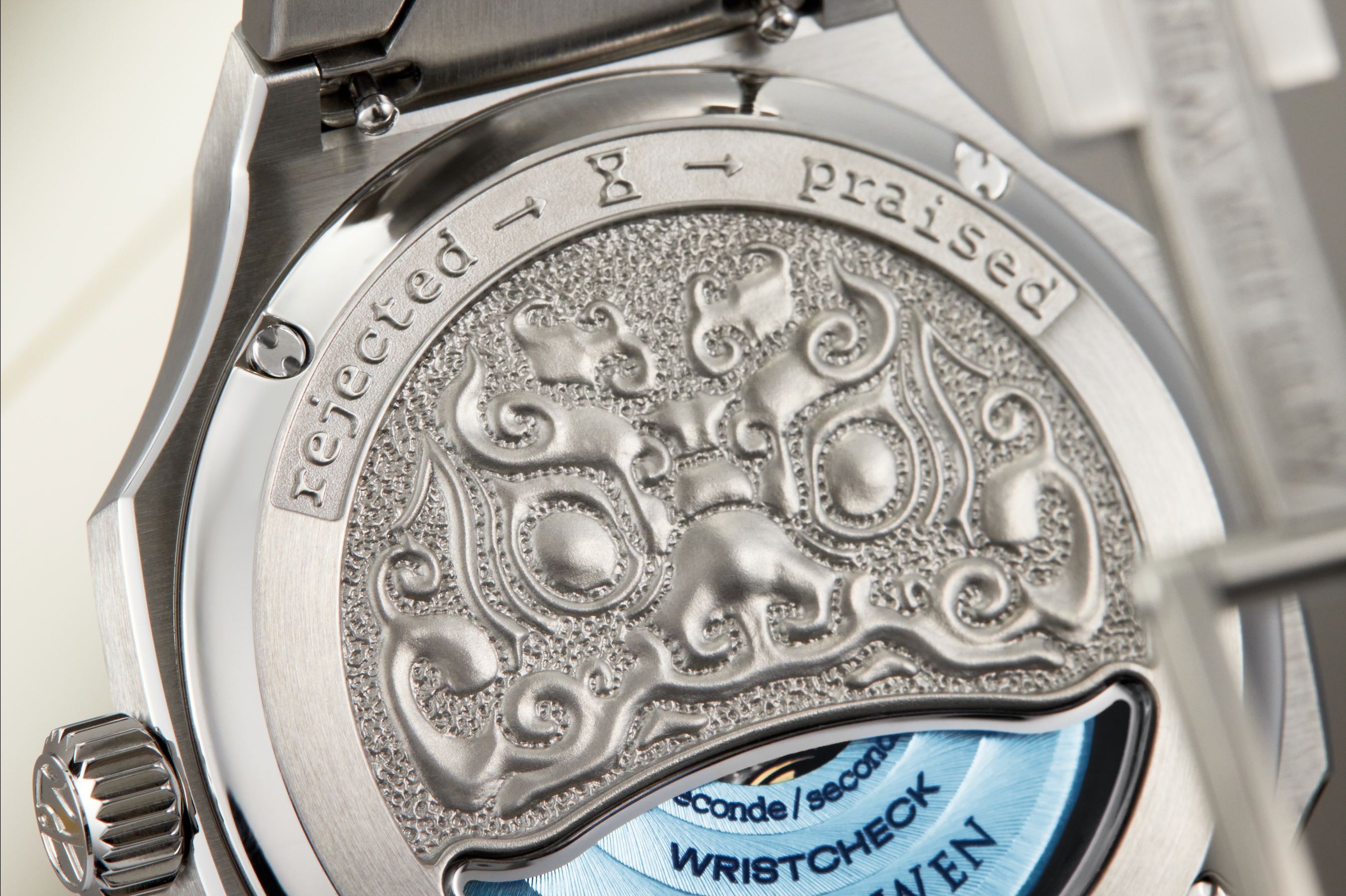
How did such a watch come about? Here is the full story:
After the successful launch of our previous collaboration, 传承 (Chuán Chéng), Wristcheck’s co-founder, Austen Chu, spoke to Robin and floated the idea of a further, even more special timepiece with the renegade artist Romaric André — better known by his pseudonym of seconde/seconde/.
Being familiar with the tedious and unforgiving process of guilloché, Austen was intrigued by the many failed dials that invariably arose in the process of creating Perception. Imagining a watch that played on this narrative, he felt that Romaric — so often acclaimed for his idiosyncratic and quirky approach towards watchmaking projects — was the perfect candidate to spearhead the project.

Romaric’s initial proposal involved the use of arrows to point out the flaws on these rejected dials, as a flippant and playful means of emphasising the handmade nature of the craft. However, when Robin got round to showing him several rejected samples, Romaric’s reaction was one of incredulity. The flaws on them bordered on unnoticeable, and knowing the amount of time each dial took to turn on the rose engine, he thought it foolish that we were imposing such stringency upon Master Cheng’s work.
Those arrows that he had first thought up would serve little purpose, considering most of them would be aimed at flaws invisible to the naked eye. Furthermore, these near-perfect dials had, in Cheng’s frustration, already been mutilated by his shears, with each possessing a cut that marred the delicate patterns.

Romaric believed this “mark of disgrace” was completely undeserved and as such felt an immediate need to reverse this irrevocable sentence. Romaric suggested the use of solid 24K gold stitches to heal the scars in each dial and make them whole once more. This, paired with solid 18k gold hands, would thereby transform these rejected dials into something far more valuable and unique, forming a symbolic embodiment of the spirit of resilience that allows for this metamorphosis.

The once rejected dials would then become the most sought-after and precious ones, with their most damaged sections transformed into the points of greatest value. What was once cast aside and destroyed by Master Cheng’s own hands could then become a representation of his restored pride in his craft — and an embodiment of his journey overcoming his modest means and background to become China’s only master guillocheur. 
While the watch remains an extension of our Perception line, we were forbidden from marking the dial with any mention of our brand, since it was so very nearly tossed out at our behest. “Your process once rejected those dials. So don’t pretend now that they are yours!” said Romaric.

The watch is named 锔瓷 — translating to "stitch", and calling back to a special, similarly named technique used to mend cracked Celadon porcelains in ancient China. The craft itself is a precursor to the famed Japanese art of kintsugi, and the most famous instance of this was executed on a jade-green Celadon tea bowl from the 12th century; a gift from the Chinese emperor 趙眘 (Zhào Shèn) of the Song Dynasty to a Japanese military commander. This bowl now stands in Tokyo’s National Museum as a valuable part of its historical collection.

Besides allowing us to referentially-honour yet another traditional craft, the name simultaneous brings to mind the healing of Cheng's pride, his emotions, and more literally, the careful healing of the cleft dial. The symbol gives new meaning to that old adage that time heals all wounds, and further lends itself to this edition’s narrative by recovering and preserving the lost time that Master Cheng has expended on the crafting of the original dial, whilst celebrating the dedication and moxie that allowed him to enact and enable this process. It is a message that is in-keeping with our brand’s desire to restore, preserve, elevate and celebrate the rich diversity and depth of Chinese craft and culture.

锔瓷 will be encased in 904L steel, as opposed to the titanium of the previous Wristcheck edition. Its case-back will also feature the aforementioned unique CNC engraving of “rejected → ⧖ → praised”, as a reflection of the process that the dial undergoes, as well as a jade-green, triple-signed rotor by all three collaborating parties.
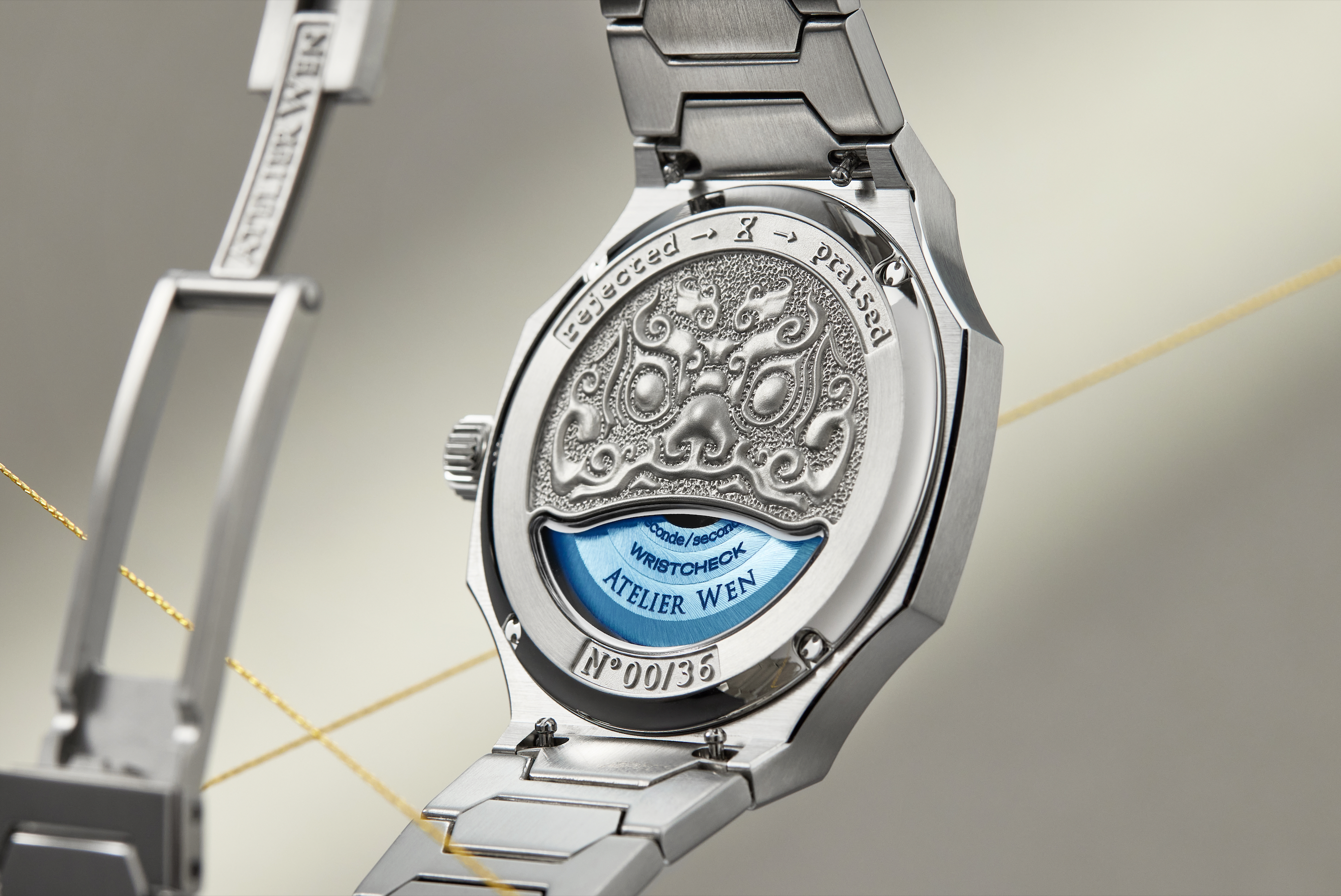
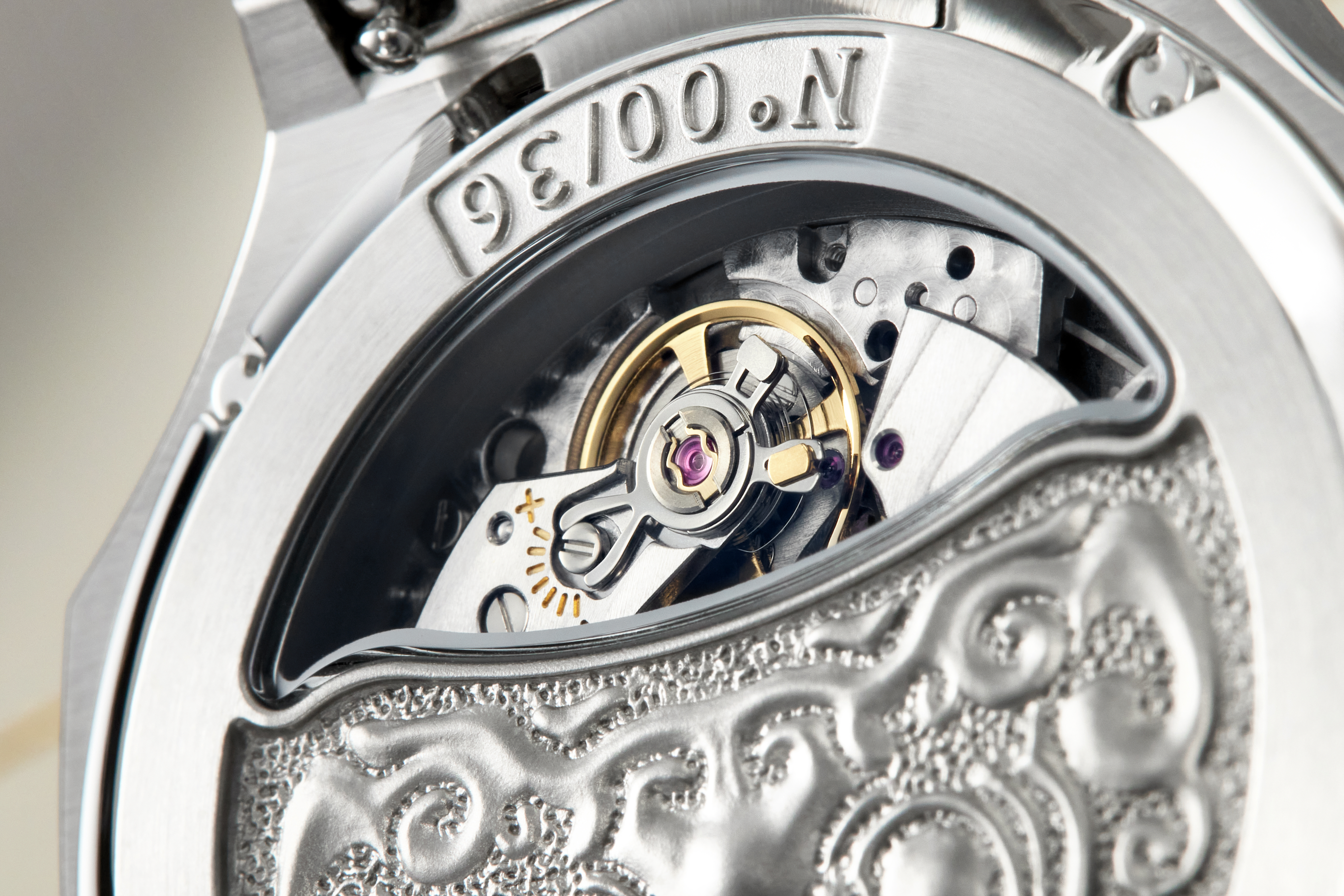
It is released as an edition of 36 individually-numbered, unique pieces, and its full specifications can be found below:
- — 904L stainless steel case with exceptional attention to finish.
- — 40mm (diameter) x 47mm (lug to lug) 9.4mm thickness.
- — Double-domed sapphire crystal with 10 layers of anti-reflective coating.
- — Deeply embossed semi-display caseback with contrasting martelé texturing, sapphire glass semi-display window and 10 layers anti-reflective coating.
- — Water resistant to 100m/10ATM.
- — Screw down crown.
- — Customised 32 jewels extra-thin (3.3mm) Dandong SL1588 automatic movement, decorated in multiple finishes and adjusted in 5 positions and for temperature fluctuations.
- — Tungsten rotor with circular côtes de Genève and jade-green rhodium plating.
- — Handmade guilloché dial turned on a rose engine by the workshop of China’ s sole guilloché master craftsman, Cheng Yucai.
- — 24K gold stitches.
- — 18K yellow gold hands with Super-LumiNova® BGW9 (X1 grade) lume.
- — Applied rhodium-plated indexes.
- — Brushed 904L stainless integrated bracelet with chamfered links, tapered both horizontally and vertically, with exceptional attention to finish and quick-release springbars.
- — Proprietary on-the-fly micro adjustment clasp with telescopic deployant blade system.
And finally, please find here the story as told by seconde/seconde/ - enjoy!











